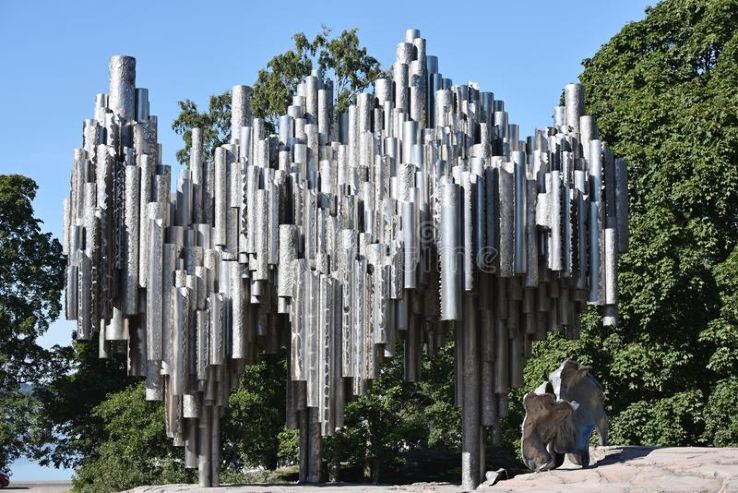

At a party she’s attending, she mentions to a group that she’d recently analyzed a classical music excerpt by Emily Howell in a college aesthetics class. I’m going to use the words of my character, Rebecca, from Outside the Limelightto describe it, because she does a better job with it than I. And now, at its peak, comes the melody, slow and majestic, instantly timeless and memorable. It becomes propulsive and spirited, with plenty of crashing cymbals and an increase in speed and intensity from the entire orchestra. The middle part of Finlandia calls in strings and woodwinds, a gentler but no less affecting sound, before the piece really ramps into high gear.

The first part delivers a brooding fanfare of horns, rumbling timpani, depicting menace, oppression that, indeed, was part of Finland’s history, through occupations by Sweden and then Russia, into the early twentieth century. And no piece conjures a sense of Finnish national pride more so than Sibelius’ Finlandia, a patriotic tone-poem, the seventh of seven tableaux written in 1899 and revised a year later.Ĭoming in at eight-ish minutes (can be up to nine), it’s short.
.jpg)
No surprise, perhaps, as both hail from Finland and both have captured, in the music, the nuance, proud spirit and dignity of this Nordic country. Particularly impressive are Vänskä’s Sibelius interpretations. Vänskä, the music director of the Minnesota Orchestra, literally staked his position on turning said orchestra into one of the country’s finest, and he continues there to excel and produce world-class music.

The main draw was the Sibelius Violin Concerto, gracefully and sensitively rendered by Latvian violinist Baiba Skride, with Finnish guest conductor Osmö Vänskä leading the orchestra. Pure inspiration.Jean Sibelius’ tone-poem, Finlandia, wasn’t supposed to be the program headliner that Saturday night at the San Francisco Symphony. The themes on which it is built came to me directly. Surely yours must be called Finlandia."Ī few years later, Sibelius wrote in his diary: 'Why does this tone poem catch on with the public? I suppose because of its plein air style. Rubenstein wrote a fantasy completely based on Russian motives for the 1899 Paris Exhibition and called it Russia. This was inspired by a suggestion from an admirer of the composer who wrote to Sibelius: "You should put something really devilish in your overture. Given the political context, it was played by European orchestras under a variety of other titles: in Germany Das Vaterland, in France, La Patrie, and in the Baltic provinces under the innocuous header of Impromtu.įinlandia was performed under the title we now know for the first time by the Helsinki Philharmonic Orchestra at the Paris World Exhibition. Its impact on Finns didn't go unnoticed by the Russians and it was banned for several years in Finland. It was composed as part of an accompaniment to a dramatic presentation ostensibly raising pension funds for newspaper workers, but in truth protesting censorship imposed by the Russians who controlled the country.įinland Awakes, as the work was first called, was the climax of the event and it crystallised the general mood of the public.Ī year on and Sibelius had reworked this piece into the form know today as Finlandia. But it was 7 years later that Finlandia made him an international name – the work's specific national flavour proving to hold a very universal appeal. In 1892, Sibelius was propelled to the top ranks of Finnish composers with a suite of five tone poems based on Finnish folklore. Lake Keitele by Akseli Gallen-Kallela Photo: public domain


 0 kommentar(er)
0 kommentar(er)
